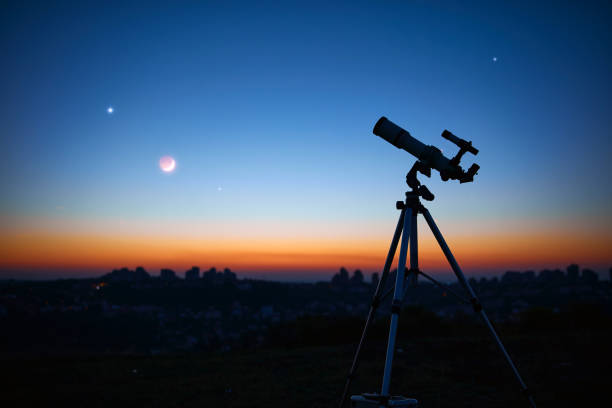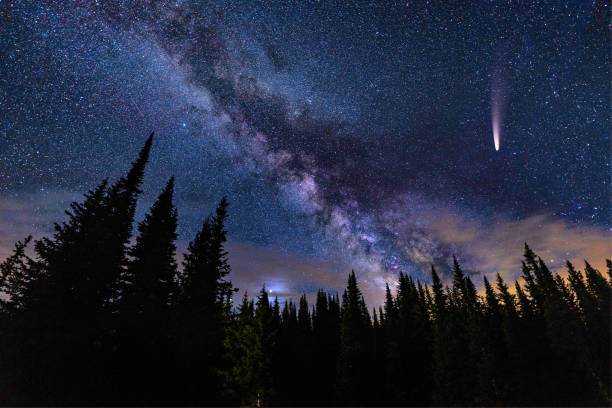Welcome to “Starry Nights and Celestial Delights: Essential Tips for Stargazing”, where we will explore the fascinating world of stargazing and provide you with valuable tips to enhance your celestial experiences. Whether you’re a beginner or an advanced stargazer, this comprehensive guide will help you navigate the night sky and make the most of your stargazing adventures.

Understanding the Basics of Stargazing
The beauty of stargazing lies in understanding the fundamentals of this captivating hobby. One vital aspect to consider is the importance of dark skies. As artificial light pollution continues to increase, finding an area free from city lights becomes crucial. National parks such as Grand Canyon National Park or Joshua Tree National Park present excellent opportunities for stargazing, offering breathtaking views of the night sky.
Imagine standing on the rim of the Grand Canyon, surrounded by the vastness of the canyon walls and the silence of the night. As you gaze upwards, the sky opens up before you, revealing a tapestry of stars that seem to go on forever. The absence of city lights allows the stars to shine brightly, creating a mesmerizing spectacle that fills you with awe and wonder.
Identifying constellations and planets is another essential skill for any stargazer. With the help of star charts, mobile apps such as Star Walk or a knowledgeable guide, you can navigate the heavens proficiently. Look up and let the constellations unravel their mythical stories as you connect the dots, giving life to epic tales of ancient civilizations.
Imagine tracing the outline of Orion, the mighty hunter, as he stands tall in the winter sky. According to Greek mythology, Orion was a skilled hunter who boasted of his abilities. As punishment, the gods placed him among the stars, forever chasing the Pleiades, a cluster of seven sisters. With each observation, you become a part of this ancient narrative, connecting with the stories that have been passed down through generations.
Moreover, it’s crucial to understand the role of the moon in stargazing. While the moon’s luminosity can hinder observations of faint celestial objects, learning to utilize its phases and position can enhance your stargazing experience. Consult lunar calendars, such as those provided by Time and Date, to plan your outings accordingly.
Imagine sitting under a crescent moon, its gentle glow casting a soft light on the landscape around you. The moon’s presence adds a touch of magic to the night, illuminating the world with a subtle glow. As you observe the stars, you can also appreciate the moon’s changing phases, from the waxing crescent to the full moon and back again. Each phase brings its own unique charm, offering different perspectives of the night sky.

Choosing the Right Equipment for Stargazing
Selecting the appropriate equipment is vital to delve deeper into the celestial realm. When deciding between telescopes and binoculars, consider factors such as portability, convenience, and optical power. Reputable brands like Celestron and Orion offer exceptional options for both novice stargazers and experienced astronomers.
Telescopes, with their ability to gather more light and provide higher magnification, are ideal for observing distant celestial objects in detail. They come in various designs, such as refractor, reflector, and compound telescopes, each with its own advantages. Refractor telescopes, for example, use lenses to focus light and are known for their crisp images, while reflector telescopes use mirrors and are often more affordable. Compound telescopes combine both lenses and mirrors, offering a versatile observing experience.
On the other hand, binoculars provide a wider field of view, making them perfect for scanning the night sky and observing larger celestial objects, such as star clusters and the moon. They are also more portable and easier to use, making them a popular choice for beginners or those who enjoy stargazing on the go.
To enhance your stargazing sessions, there are essential accessories worth considering. Red LED headlamps preserve night vision, allowing you to navigate your observing area without disrupting your eyes’ adaptation to darkness. Comfortable camping chairs provide relaxed and immersive stargazing experiences, allowing you to sit back and enjoy the wonders of the night sky in comfort. Some chairs even come with built-in cup holders and pockets for storing your stargazing essentials.
When it comes to purchasing stargazing equipment and accessories, specialized retailers and online outlets like Telescope.com or Astronomics offer a wide range of options to suit every stargazer’s needs. These reputable sources provide expert advice, customer reviews, and a variety of products to choose from, ensuring that you find the perfect equipment for your stargazing adventures.
Embracing technology can also elevate your stargazing journey. Apps like Stellarium or NASA’s mobile apps offer real-time sky maps, satellite tracking, and live feeds from the International Space Station. These apps allow you to identify constellations, track the movement of planets, and even receive notifications about upcoming astronomical events. They are a valuable tool for both beginners and experienced stargazers, providing a wealth of information at your fingertips.
For those interested in capturing the beauty of the night sky, astrophotography offers a thrilling avenue. Advanced camera attachments and software can be used to capture stunning images of celestial wonders, from the colorful swirls of nebulae to the intricate details of distant galaxies. With the right equipment and techniques, astrophotography enthusiasts can create breathtaking images that showcase the awe-inspiring beauty of the universe.
Whether you choose telescopes or binoculars, invest in essential accessories, or explore the world of astrophotography, the key is to find the equipment and tools that align with your interests and goals. Stargazing is a journey of exploration and discovery, and with the right equipment, you can unlock the wonders of the universe and embark on an unforgettable celestial adventure.

Preparing for a Night Under the Stars
To fully enjoy your night under the stars, preparation is key. Dress appropriately for the conditions you expect to encounter. Layered clothing, comfortable shoes, and a warm hat will keep you comfortable during chilly nights. If your adventure takes you to colder climates, consider stargazing-friendly thermal gear.
Create a stargazing checklist to ensure you have all the essentials on hand. This may include a sky atlas or guidebook, observing notebook and pen, snacks, water, and a blanket or reclining chair for comfort.
Remember to prioritize safety during your nighttime observations. Familiarize yourself with the area you’re visiting, especially if you’re stargazing in unfamiliar territories or at remote locations. Carry a flashlight with a red filter to preserve night vision without disrupting wildlife or fellow stargazers. Ensure you have proper safety equipment, such as a first aid kit and communication devices, if needed. Additionally, check local ordinances and regulations regarding stargazing to ensure a seamless experience.
More often than not we are looking down at our computers or phones, when we should really be looking up towards the night sky – its beauty knows no bounds!



